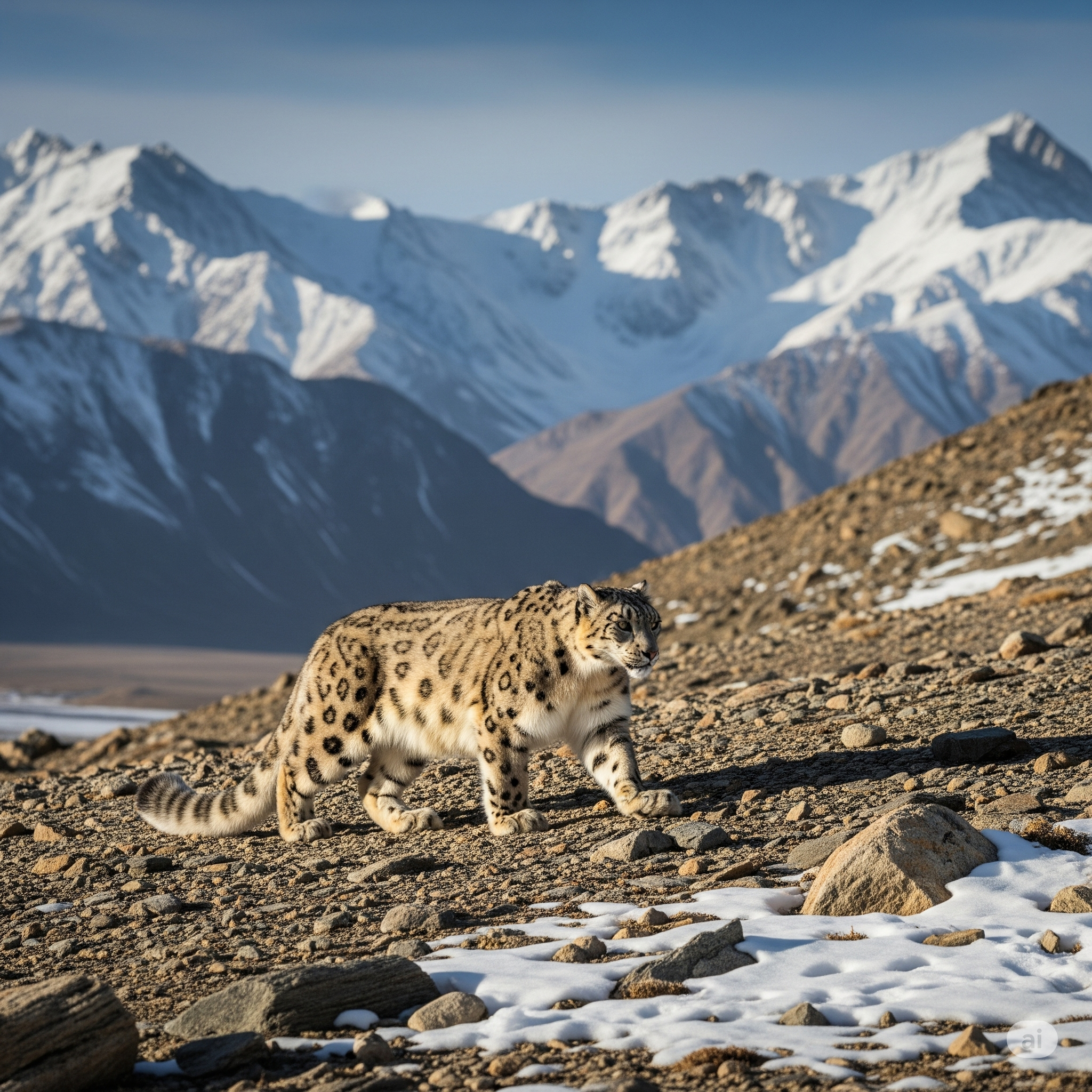A Mountain Ghost No More: Why This Discovery Matters
Snow leopards (Panthera uncia), often called the “ghost of the mountains,” are among the most elusive big cats on Earth. Known for their stealth, camouflage, and sparse population, these majestic animals inhabit the rugged terrains of the Himalayas and Central Asia.
A landmark 2025 survey led by the Wildlife Institute of India, in partnership with local authorities and global conservation groups, recorded 477 snow leopards in Ladakh alone. This accounts for 68% of India’s total snow leopard population.
Why is this a big deal?
- India is home to roughly 700 snow leopards in total
- Ladakh’s terrain offers the perfect blend of altitude, isolation, and prey base
- Such clarity in population data was previously missing due to the species’ elusive nature
💪 What Enabled Ladakh’s Conservation Success?
1. Community-Led Monitoring
Over the past decade, Ladakhi herders, locals, and NGOs have partnered in citizen science projects, installing camera traps and monitoring wildlife without disturbing their habitat.
“Locals now see snow leopards as assets, not threats,” says Rigzin Norbu, a conservation coordinator in Leh.
2. Government & Military Collaboration
Given the strategic border location, Ladakh has a high presence of the Indian Army. The defence ministry and wildlife authorities worked in sync to:
- Avoid construction in fragile zones
- Report wildlife sightings to research teams
- Assist in logistical support during harsh winters
3. Eco-Tourism with Accountability
Initiatives like homestays, snow leopard spotting treks, and wildlife education in schools helped generate income and awareness while ensuring no ecological damage.
📊 Breaking Down the Numbers
- Total surveyed area: 93,000 sq. km across Ladakh
- Survey methods: Camera traps, scat DNA analysis, and GPS collaring
- Average density: 0.5 snow leopards per 100 sq. km
- Key hotspots: Hemis National Park, Changthang Wildlife Sanctuary, Nubra Valley
🧬 Snow Leopards: Keystone Species in Peril
Snow leopards are apex predators and play a vital role in maintaining the ecological balance of high-altitude regions. Their health indicates the overall wellness of the Himalayan ecosystem.
Yet, challenges remain:
- Climate change is shrinking their prey base
- Infrastructure projects threaten migratory routes
- Livestock conflicts still occur, despite declining
🚩 What the World Can Learn from Ladakh
Ladakh is now a model for high-altitude conservation. Here’s what makes it replicable:
- Science meets tradition: Scientific monitoring aligned with indigenous knowledge
- Bottom-up governance: Local buy-in ensured program success
- Tourism that gives back: Revenues from wildlife tourism feed conservation
Countries like Nepal, Bhutan, and Mongolia are already studying Ladakh’s approach for replication.
🌿 The Road Ahead: Opportunities & Risks
What to build on:
- Strengthening conservation incentives for communities
- Creating buffer corridors for migrating leopards
- Integrating snow leopard research into school curriculums
What to watch out for:
- Overtourism damaging fragile habitats
- Unregulated mining or construction in key zones
- Political tensions affecting conservation funding
🚀 Final Thoughts: From Silence to Roar
The snow leopard’s rise in Ladakh isn’t just about numbers. It symbolizes the power of coexistence and sustainable stewardship in a region facing multiple pressures. From traditional herders to field biologists, from policymakers to school kids, this is a shared win for wildlife and people.
In an age of climate anxiety and biodiversity loss, Ladakh offers a hopeful reminder: When humans listen, nature recovers.









+ There are no comments
Add yours